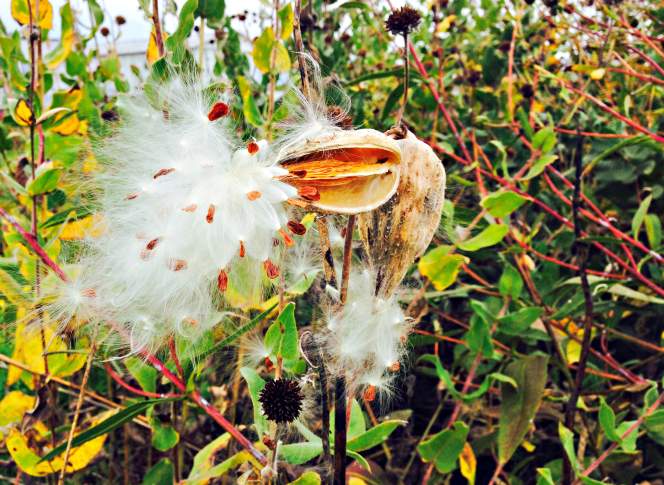Seeding Milkweed Can Help Patch Up Monarch Butterfly Habitat
Fall is a great time to harvest and sow milkweed seeds. For the monarch butterfly, milkweeds are essential for survival.
November 7, 2016

Milkweed seed pod

Fall is a great time to harvest and sow milkweed seeds. For the monarch butterfly, milkweeds are essential for survival. Monarch caterpillars feed solely on milkweed leaves, while adults lay eggs on the plant and renew the cycle. Moreover, milkweed flowers produce pollen and nectars for monarchs and other pollinators. The available habitat for milkweeds has declined in the past decade, though, largely due to urbanization and change in agricultural practices.
To support monarch butterflies, people can help the milkweed population rebound by planting more of these plants in communal open spaces, urban gardens and backyards. An easy and quick way to repopulate milkweeds is by collecting seeds from mature plants.
Milkweed plants are easy to spot in suburban and countryside areas — their distinctive seed pods make them easy to identify. People looking for seeds can scout roadsides, ditches, meadows and field edges because milkweed likes to grow in disturbed habitats, meaning the original soil layer has been tilled, trenched, cleared of vegetation, exposed or modified by environmental factors.
Anyone wanting to search on private property for seed pods should get permission from property owners. In mid to late fall, the mature seed pods of the milkweed plant split and release a plume of white fluffy seeds into the air that are noticeable from a distance.
Only dry, mature seed pods that are brown and split or about to crack open when gently squeezed should be harvested. Immature pods are greenish white or yellow, and they should be left for a later harvest.
Seed pods should be gathered from different areas to get a diversity of milkweed species. Wisconsin has 14 native milkweed species — common milkweed (Asclepias syriaca), swamp milkweed (Asclepias incarnata) and butterfly weeds (Asclepias tuberosa) are typical species found in many regions of the state.
Separating the seeds from their surrounding white fluff can be a little messy, but there is an easy way to sort it out. The pod’s contents can be placed in a paper bag with a few pennies.
The closed bag can be shaken vigorously for a couple of minutes, which will separate the seeds so they rest on its bottom, under the lighter-weight fluff. A small hole can be torn in the bottom of the bag to remove the seeds.
Milkweed seeds can be sown in fall or stored in the refrigerator until spring. For fall seeding, the seeds should be planted in a sunny bare spot after rainfall, or the ground is moistened with a little watering. A finger or pencil can be used to poke a hole to about 1 inch deep, into which a seed can be dropped and then covered with the original soil. The planting site can be marked with a label to determine germination success in spring and to differentiate the milkweed from actual weeds. Seeds also can be planted in a container filled with potting mix and placed in a protected spot like the north side a landscaped area or building.
For spring seeding, milkweed seeds need to be stored under stratified and cold, moist conditions for certain periods to enhance germination. To stratify, the seeds must be wrapped in a moist paper towel, placed in a perforated plastic bag and refrigerated for up to three months. They should not be stored in the freezer. The paper towel should be checked every other week, and water sprinkled on it to keep the seeds moist. When spring arrives, the seeds can be started indoors four to six weeks prior to transplanting them outdoors, or they can be directly seeded outside after the last frost in spring.
Vijai Pandian is a horticultural agent and educator for the University of Wisconsin-Extension Brown County. This article is adapted from an item originally published by the Green Bay Press Gazette.
 Passport
Passport











Follow Us